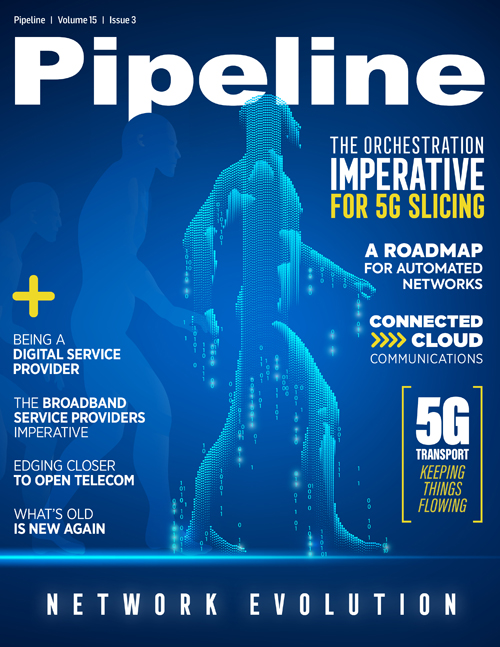Orchestration Imperative for 5G Slicing
End-to-End (E2E) connectivity for all possible human and Machine-to-Machine (M2M) requirements means that, in many cases, multiple CSPs will have to cooperate in forming slices across their domains and technologies. The E2E connectivity also means that communication not only span across technologies (satellite communications, traditional wireline, wireless, and more) but also CSP boundaries and geopolitical, regulatory and cultural boundaries. Because of its complexity, handling orchestration across dissimilar regulatory and political boundaries will be discussed in a subsequent article.
Let’s look at a few use cases to illustrate the business and technical implications of 5G slicing. The low latency and high bandwidth of 5G have been targeted to, among other potential uses,
the connected autonomous car. In one use case, two CSPs offering services in the same area face the expense of deploying 5G basestations to serve a 500-kilometer freeway covering flat rural land
linking two metro areas. In 4G, basestations could be 50 kilometers apart, meaning there is a requirement of ten basestations to cover the road. But in 5G, because of the higher RF frequency
and lower latency, basestations might have to be 1 kilometer apart, meaning 500 basestations to cover the area. This means not just more basestations, but more backhaul and more ePC. With
fifty times as many basestations, the cost projections are daunting. So, the two CSPs decide to deploy one system and share the costs. There are many cost-sharing scenarios, from
sharing just the basestations to sharing everything including backhaul and ePC. Although it is likely that each physical component will be operated by one entity, it is possible that
different segments such as basestation and backhaul will be operated by different entities—for example, wireless and wireline groups in a single CSP, in different CSPs, and so forth.
Another use case example involves the connected autonomous car. A model of the Audi A8 has been introduced with a limited autonomous driving capability. Audi has stated that it will assume all financial liability for any accident that occurs while the car is in autonomous mode. This means that Audi will want to monitor the cars to make sure that there is no problem resulting from a bug, cybersecurity breach, or other outside interference. Because of the potential liability, Audi will want a very low latency connection to all equipped A8s in the world. For example, the German monitoring system will want low latency connectivity from Germany to an A8 on US highways. This scenario will likely involve a number of CSPs: at least one in Germany, another over the Atlantic and, because of coverage gaps, more than one in the US.
A third use case involves a merchant bank in New York that sees a short-term opportunity to do currency arbitrage transactions between New York and Tokyo. While there is a dedicated fiber link built just for this purpose, it is fully occupied by long-term leases. So, the bank purchases a temporary low latency and very expensive service for the transactions and a less expensive longer latency service for back office info. It makes this purchase a CSP, which we will call CSP A. CSP A has to quickly assemble both services. To get immediate connectivity to the bank, fixed 5G is used. For the transaction service, a transcontinental fiber line from CSP B is connected to a transpacific fiber link from CSP C. For the longer latency service at lower cost, a wireline connection to a satellite dish in northern New Jersey connecting to a dish outside Tokyo and then wireline to the Tokyo exchange is used.
In all three of these use cases, Service Level Agreements (SLAs) will be necessary. What is interesting here is how the SLAs are implemented and the implications for orchestration. In the past, we have thought of SLAs as static, long-term and single-targeted. In the world of 5G slicing, they will be dynamic, short-lived, and many-pronged. In the banking example, the two services may be created, used, and retired within a single day. There are also two different SLAs with the bank for the two purchased services, and those SLAs propagate between and within a number of different units in the customer-facing CSP, and between the customer-facing CSP and the other CSPs providing portions of the end-to-end service. A similar situation is apparent in the Audi use case.


















